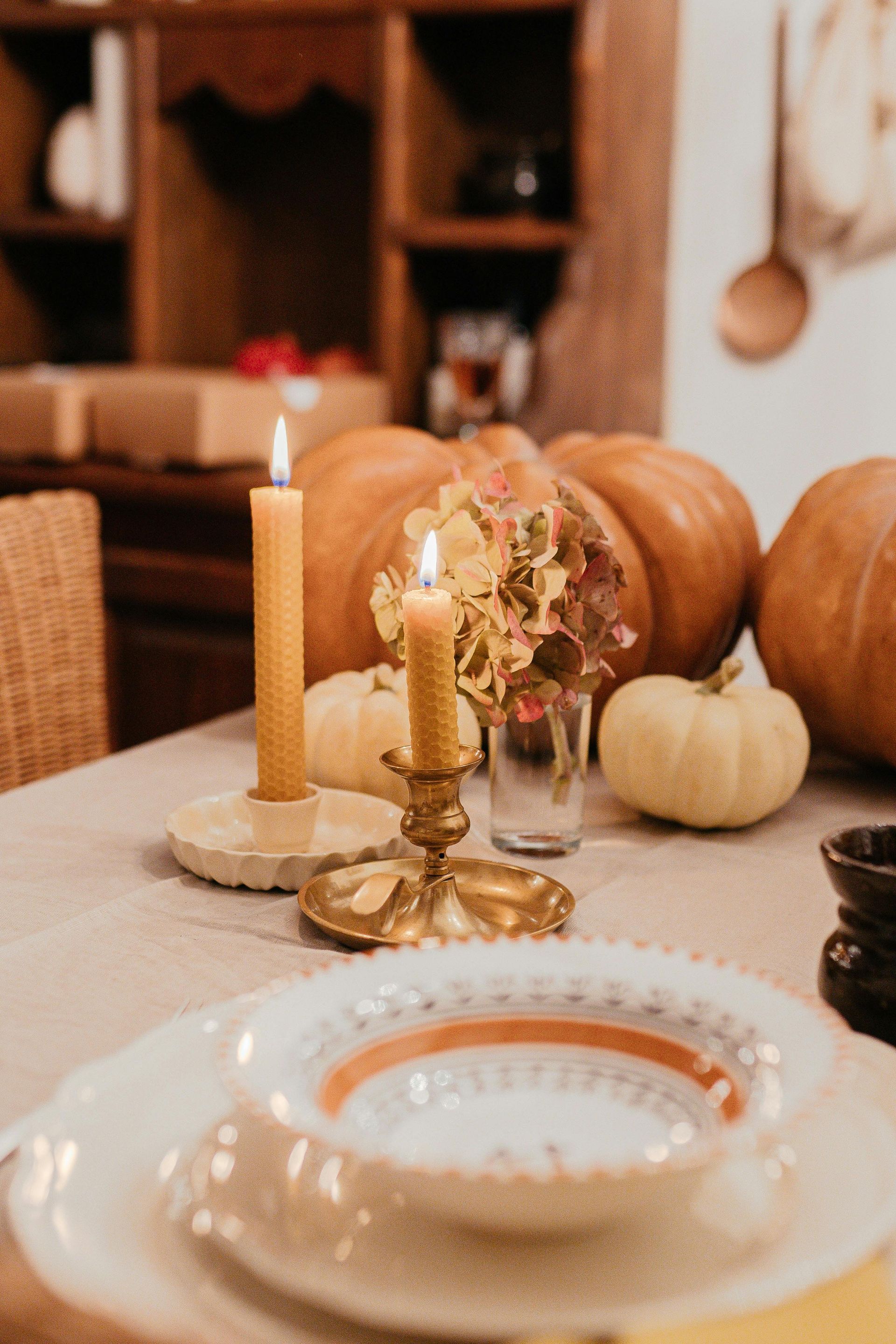What’s It Worth: Department 56
Department 56 Holiday Collectibles
How do you decorate for the holidays? For many, transforming their home with elaborate holiday zeal is a seasonal ritual
that lightens the mood and brings joy to the whole household.
There are lots of ways to go crazy on the holiday decorations, but one of our particular favorites is the Christmas village. These table-top displays tend to grow over the years and can manifest as a full-on miniature town complete with tiny inhabitants going about their holiday errands. Collectibles advisor Charles Tinsley
weighs in on What’s It Worth: Department 56.
Department 56
Of all the versions of ceramic towns that pop up in American homes every December, the Department 56 Christmas Villages
continue to be one of the most popular items in the Christmas collectibles market.
The charming Department 56 ceramic pieces, decorated for the holidays and lit brightly behind their tiny windows, were the brainchild of Ed Banzinet, a talented designer who oversaw the Gift Import Department (Department 56!) of the Bachman Company in Minneapolis.
The first Department 56 buildings were released in 1976. The Original Snow Village consisted of six pieces: four little houses and two churches. The Original Snow Village was based on an actual town near Ed’s home in Stillwater, Minnesota. Stillwater had a tradition of decorating the houses, stores and churches for Christmas with garlands, wreaths and bright lights.
The first Christmas village set the character for the brand: highly detailed ceramic buildings that are brightly lit to create the look that originally inspired him. In the first two years of the collection, nine more pieces were added. These first designs in the collection remain the most highly prized by collectors today.
A Focus on Popular Culture
Like many decorative or seasonal collectables, Department 56 releases new designs every year, inspiring collectors to commemorate the years and the celebration of family milestones with new pieces.
Department 56 enjoyed a popularity boost from an unlikely source: pieces based on the 1989 film National Lampoon’s Christmas Vacation. In the movie, Clark Griswold’s boss Mr. Shirley did not give Christmas bonuses that year, but did have a celebration in his large and well appointed home. This scene was the inspiration for the very popular miniature Boss Shirley’s House. The film inspired a whole host of buildings, characters and accessories, including Todd & Margo’s House. The Christmas Vacation series remains among the most popular and sought-after pieces.
Over the years, Department 56 has released many other designs based on popular culture and holiday films, including “A Christmas Story”, many Disney
characters, a vintage Harley Davidson
store and even a miniature Downton Abbey.
The greatest challenge for this particular collectible is that they are ceramic, and therefore fragile. The value decreases greatly if they do not come with their original box and packaging. Since they are usually associated with the holiday season, they spend most of the time in storage. They take up a lot of room which means collectors have to sacrifice valuable storage space
in their homes.
So, What’s it Worth?
As is the case with many collectibles these days, the value of Department 56 pieces is not as high as it has been in the past, but they do continue to be highly sought after.
Notable online auction sales in the fall 2021 include National Lampoon’s Christmas Vacation series. These designs remain at the top of the heap for collectors:
• Todd and Margo’s House $2800
• The Department Store $500-$900
• Griswold Family Buys a Tree $375
The Dickens Village pieces are highly collected as well. In 2021 the top prices for pieces in this set were:
• Kensington Palace $125
• Norman Church $220
• Dead Creek Village Mill $200
Smaller pieces in the collection such as “The Christmas Carol” may go for $40 to $50.
Other sought-after designs include the Halloween Haunted Mansion
($800-$1000) and the Chick-Fil-A Dwarf House
($450).
Common Designs
Currently, the majority of the Department 56 collectibles are sold in larger lots, in their original boxes. Lots of 8-12 pieces may go for $200-$225. Large collections of 75 or more pieces in their boxes may sell for as much as $1200.
If you love constructing a tiny village in your home for the holidays, and you have the space to store them, our advice is to continue enjoying your collection as long as you can!
You could even scoop up some delightful additions to add a new neighborhood at a relatively low cost.
When you’re ready to sell, you’ll probably do best to package them as a lot and sell them online or at a local auction house.

The holiday season is a time for traditions, celebrations, and bringing loved ones together. One tradition that has graced festive tables for centuries is themed dinnerware, and few brands embody the essence of holiday elegance like Spode. The timeless appeal of these special dishes has been passed down through generations, beloved for their classic designs, meticulous craftsmanship, and sense of continuity and nostalgia. Founded in 1770, Spode has been putting out beautiful ceramic creations for over 250 years. In fact, these dishes are still being produced, though under the name Portmeirion, and can be found for purchase on home decor sites such as Wayfair to this very day! With such timeless appeal, these collectables have fluctuated in desirability and value over the years. Their 2023 values can be determined by a variety of factors including rarity, condition, and investment potential. Do you have a collection of Spode dinnerware, either older or more contemporary? What might they be worth today? Identifying Spode Dinnerware Like most ceramic collectibles, authenticity can usually be determined by maker’s marks. Dishes produced from 1927-1957 show an ornate backstamp that reads “Copeland, Spode, England”. Dishes produced after 1960 show a different maker’s mark as the company changed ownership – they simply read “Spode, England” followed by a pattern name and a pattern number that ends with a letter to indicate the year produced. Dating your piece can be trickier, but if you know how to identify the date marks, it can be a major help. Pieces from the early 1800s through 1963 will often show an impressed date mark in flat areas, such as the back of a saucer or dish. For pieces dated later than 1963, it gets even more complicated, and a reference book will be needed to accurately date the pieces. We recommend consulting Spode & Copeland Marks and Other Relevant Intelligence by Robert Copeland. Lookalikes With the popularity that holiday china has garnered over the years, there are bound to be some copycats out there. And surprisingly – Spode isn’t actually the original! Their Christmas Tree pattern was introduced in 1938, but Cuthbertson was actually the first company to create holiday china with a central Christmas Tree motif, introduced in 1922. A side-by-side comparison reveals that the Cuthbertson pieces tend to be more brightly colored, and they of course have different maker’s marks on the backs of the dishes – reading “Cuthbertson, The Original Christmas Tree”. Avid collectors may also be quick to point out that the Cuthbertson image includes a blue car under the tree. Condition One of the most important factors in determining the value of a collectible is its condition. Items in mint or near mint condition will always garner a higher price than a similar collectible in damaged condition. For Spode holiday dishes, signs of wear on the pattern and chips or cracks in the ceramic are the biggest determining factors for assessing condition. Here’s how it breaks down: Mint – Appears brand new and shows no signs of wear. It has no flaws, scratches, or marks. The item has never been used, or if it has, it has been used very sparingly. A dish that’s still in its original packaging, has never been used, and has no visible imperfections would be a great example of Mint condition. Near Mint – Shows only the slightest signs of wear. It might have very minor imperfections that are barely noticeable and would not detract from the overall appearance or functionality of the item. Pieces in near mint condition have been well cared for; they might have a tiny scratch or mark, but it’s hardly noticeable. Excellent – Shows minor signs of wear or age. There might be some minor flaws or signs of use, but they are not immediately noticeable and do not significantly detract from the item’s appearance or value. Pieces in excellent condition may have been used on a few occasions and might have a couple of minor scratches or a tiny chip on the underside, but the main design remains intact and vibrant. Very Good – Shows clear signs of use and wear. There might be some noticeable flaws, like small chips, scratches, or slight fading. However, the item is still functional and retains most of its original charm. Pieces in very good condition may have been used regularly over the years. They may have some wear marks, a few small chips on the edges, and some fading of the design. Damaged – Has significant flaws or damage that affect its functionality or appearance. This could include large chips, cracks, significant fading, or other defects. An example would be a dish that has a large crack running through it, significant chips on its edges, and considerable fading of its design. Other Considerations Besides condition, there are some other factors that can help determine the value of your Spode holiday dishes including rarity, where they are listed for sale, and their investment potential. Rarity : Vintage and discontinued Spode patterns can be rare finds, making them highly sought after by collectors. Limited-edition releases and unique pieces also contribute to their rarity and value. Collector’s Market : Spode holiday dishes have a dedicated collector’s market, where enthusiasts are willing to pay a premium for rare and pristine pieces. The internet has made it easier for collectors to connect and trade, further boosting their value. Investment Potential : While Spode holiday dishes are cherished for their aesthetic appeal and sentimental value, they can also be seen as investment pieces. Some patterns have seen steady appreciation in value over the years, making them a potentially profitable investment. Most Sought-After Christmas Tree – This pattern is arguably the most iconic and enduring holiday offering from Spode. A decorated Christmas tree adorned with colorful baubles and presents is the central motif for this charming pattern that has been a favorite for generations. A never-used 1990s service for 12 totaling 41 pieces sold for $200 in 2023. Christmas Rose – This pattern showcases delicate red roses, green holly leaves, and gold accents, creating an elegant and festive look. It’s a favorite among collectors who appreciate a more traditional and refined holiday table setting. An undated Spode Christmas Rose Bone China Tea Pot sold in 2023 for $225. Woodland – While not exclusively a holiday pattern, this pattern features a variety of woodland creatures, including deer, rabbits, and birds. An undated set of 12 dinner plates and 12 salad plates featuring the Spode Woodland pattern sold for $460 in 2023. Christmas Tree Grove – This pattern features a charming scene of a snowy village with decorated Christmas trees and cottages. It’s a less common Spode holiday pattern, but has garnered attention from collectors who appreciate its scenic design. An undated 5-piece place setting sold for $139.95 in 2023. Advice for Sellers As we enter another holiday season, Spode holiday dishes continue to hold a special place in the hearts of collectors and families alike. Their timeless design, craftsmanship, and evolving value make them a cherished tradition that connects generations and adds a touch of elegance to festive celebrations. Whether you’re a collector or someone who simply appreciates the beauty of these dishes, Spode’s holiday offerings are sure to shine brightly on your holiday table. And if holiday china isn’t really your thing, rest assured there is still a demand for these fun and festive dishes, so selling them is still a viable option.

The holidays present some challenges for downsizers. While the idea of entertaining, giving and receiving gifts, and generally staying busy with seasonal obligations and activities can make us feel like we don’t have time to think about downsizing, December can actually be a great time to make some progress on your downsizing goals. Our 12 Days of tips for downsizing can help you make the most of the season and get ahead on downsizing tasks too! 1) Sort and Declutter your Holiday Decorations Take the time to pull out ALL of your holiday decorations early in the season. Use your favorite items to decorate indoors and out using the supplies (and the energy!) you have available. Any supplies that don’t make the cut should be donated early in the season so that others may use them. When it’s time to store them again, you’ll be grateful for the extra space! 2) Look for Opportunities to Donate Items for Gifting Look around your community for schools, churches, or local charities that sponsor Holiday Markets. These popular events create an opportunity to donate household items, coats, costume jewelry, and other gift-able items so that others may re-use them for gift-giving. 3) Address Your Honey-Do List Make a list of small repairs or improvements that will make your home safe and welcoming for the season. Be sure to leave electrical and plumbing repairs to the experts, and to use supplies that you have on hand before you head out to the hardware store. When you’re ready to move, you’ll be glad to have a shorter list of home maintenance tasks. 4) Use Up Your Wrapping Supplies Make an effort to use up all of the gift wrap, greeting cards, ribbons and gift boxes you’ve accumulated over the years. If you have holiday supplies you haven’t reached for in many years, it’s probably time to move them to the donation or recycling pile. 5) Clear Out the Pantry In preparation for the season, check your pantry, refrigerator and freezer for outdated or unwanted food items. Once you have only fresh food on hand, work on eating or sharing what you have and resisting the urge to stock up again. 6) Let the Liquor Go Some say that spirits don’t go bad, but if you have liquor you’ve had on hand for several years, it may be time to move it out. Low-quality or cloudy bottles should be tossed, while others should be shared or enjoyed. 7) Choose Your Favorite Dinner Ware Use your favorite items to set a holiday table or buffet, and set aside the pieces you chose not to use this year or no longer need. 8) Lighten Up Your Linens and Towels Take a quick pass through your linen closet and remove tired towels, fraying blankets, or unneeded table linens. Look for textile recycling in your area for well-worn items. 9) Sort Your Gadgets Take note of the kitchen tools you use as you prepare your favorite meals this season. Most downsizers find that duplicate or specialty tools don’t usually make the cut when they pack their kitchen for their next home. 10) Pitch Plastic Containers Plastic food containers seem to multiply in our cabinets. Make an effort to use the ones you have on hand to send holiday treats or send leftovers home with guests. In the future consider only having enough to save a few days’ worth of food storage. 11) Offer Items to Visiting Family Members If you are thinking about downsizing over the next year, now is an excellent time to offer heirloom or sentimental items. If you don’t get any takers, allow yourself to donate or sell those items instead. 12) Focus on What Really Matters Most downsizers report that the best part of the process is enjoying the freedom to enjoy spending time with friends and family without the responsibility of managing a large home and owning a lot of “stuff”. Are you downsizing your belongings and looking forward to a smaller, more manageable space? Let us know what you’re up to! We can give you free tools and resources to get you started, and introduce you to qualified, helpful people in your area to step in when you need them.

Once the high of the holiday season is over reality sets in. It’s time to pack up everything to get ready for the next season. Are you dreading it even more this year because you have a lot less storage space? I hear you. Living in a small home sometimes takes creativity to find the space for what’s important to you. Below are some strategies to get you through the holiday decorations packing process. Simplify Your Collection Consider simplifying your collection to a theme or just the sentimental stuff. As you decide what to keep, opt for smaller items and consider replacing decorations that take up a lot of space. For instance, use a house light projector instead of string lights. Keep Your Collection Small Each year, take time to edit your collection. When you bring in new things, such as those annual ornaments marking the year, try to remove something else to make space. Before packing your things away, remove anything that’s broken, doesn’t work, or missing parts or pieces. Then donate, sell, or gift anything you haven’t used. Take Everything Apart I know it’s more work but taking everything apart and putting it back together each year, like your faux trees, is going to save you much-needed space. Take apart your string of lights and roll them individually around cardboard instead of a large holiday light reel. Same goes for your extension cords. Separate Indoor vs. Outdoor Indoor decorations, especially things like candles and wrapping paper, need to be climate controlled. Separate them from outdoor decorations, which you can store in an outdoor shed or garage. Containerize + Label Pack everything neatly into bins and bags by season/holiday and indoor vs. outdoor then label everything. Use every last drop of space in the container and utilize storage solutions meant for what you have, such as a wreath bag or figurine box. Protect Fragile Items No point in taking up storage space for 10+ months with broken figurines and ornaments. Protect your treasures and use options that take up less space like cardboard dividers and ornament boxes rather than packing paper and bubble wrap. Use paper plates to divide china instead of wrapping them individually. Use Vertical Space You need to be creative in a small home with limited storage. Think vertical. Use the walls of a closet, the back of a door, or garage ceiling racks, which are ideal for outdoor décor. Don’t forget to look down too. Use under-bed bins, ideally with wheels, to tuck things under furniture. This is a great option for storing your birthday gift wrapping supplies and other things you’ll need year-round, so you can access them easily. Wrap Up Storing holiday items doesn’t have to be a seasonal nightmare. Use these steps to face it head on, so you can relax and enjoy the next season. You may even find you have a little fun now that you know what to do. Stay focused on the reward… Being able to bring the next season’s treasures out! Happy packing!

